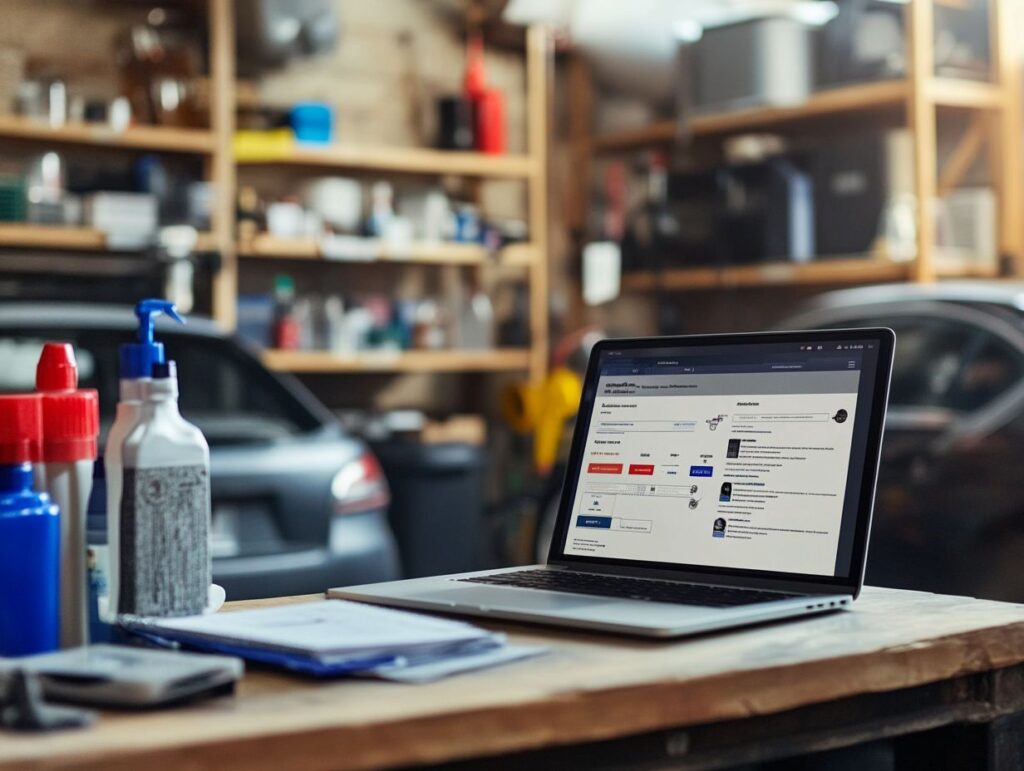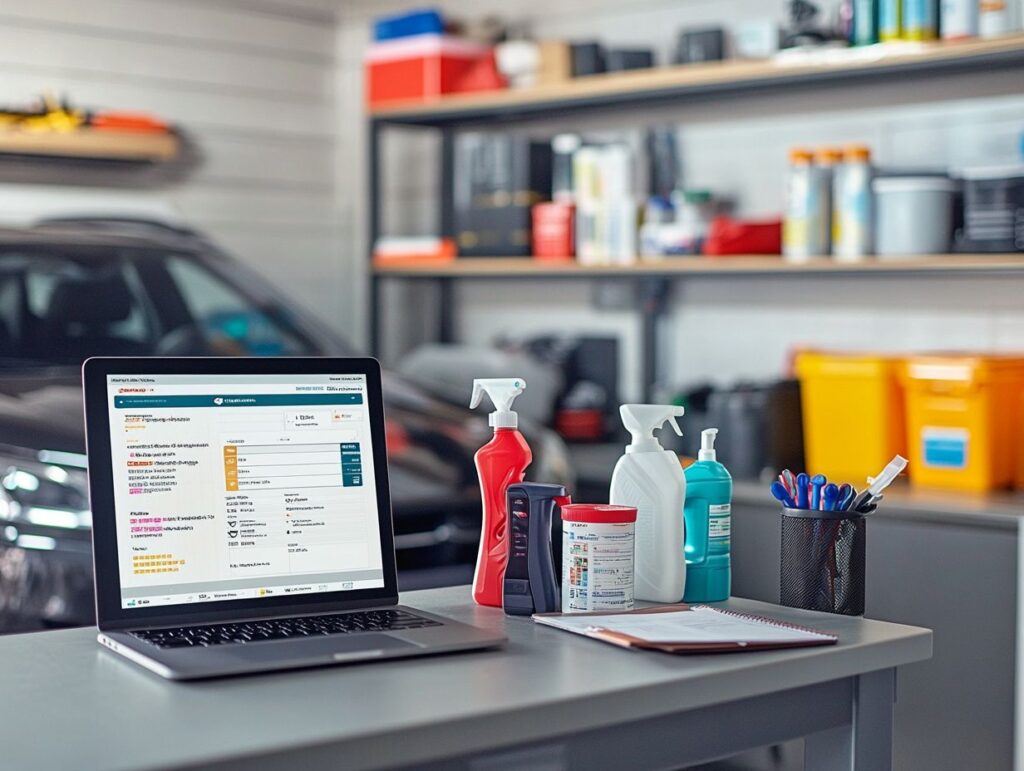
Loyalty programs have emerged as a crucial strategy for businesses, particularly within the competitive realm of auto detailing. These programs serve not only to reward customers but also to cultivate enduring relationships that encourage repeat business.
This article examines the fundamental aspects of loyalty programs, their advantages for auto detailing enterprises, and the diverse types available. It provides practical steps for developing an effective loyalty program tailored to your target audience, along with marketing strategies designed to ensure its success.
The insights presented will elucidate how to enhance customer loyalty and positively impact your business’s bottom line.
Benefits of Loyalty Programs for Auto Detailing Businesses

The implementation of a loyalty program can yield substantial benefits for auto detailing businesses, effectively incentivizing customer loyalty and enhancing customer retention, which ultimately contributes to sustained business growth.
By offering advantages such as exclusive promotions, discounts, and tiered rewards, businesses can significantly improve customer satisfaction and encourage repeat patronage.
Furthermore, these programs function as a potent marketing strategy that drives revenue growth by fostering robust customer relationships and enhancing the quality of service provided.
Incentivizing Customer Loyalty
Incentivizing customer loyalty is essential for businesses aiming to retain clientele in a competitive landscape, particularly within the auto detailing sector. By implementing effective incentives such as loyalty rewards, discounts, and referral programs, businesses can cultivate strong relationships with their customers and encourage repeat transactions. Customers are more inclined to return when they perceive added value through incentives that enhance their overall experience.
One highly effective strategy involves the adoption of tiered loyalty programs, wherein customers earn rewards that increase in value corresponding to their level of engagement. This approach motivates clients to increase their spending to unlock higher-tier benefits, such as exclusive discounts or complimentary services.
Referral programs also significantly contribute to enhancing customer engagement, as they not only reward existing customers for bringing in new clients but also foster a sense of community and shared experience.
Additionally, thoughtfully structured discounts, such as first-time service offers or seasonal promotions, can further strengthen the relationship between businesses and their customers, nurturing long-lasting loyalty that is mutually advantageous.
Increasing Customer Retention
Increasing customer retention is a primary objective of loyalty programs, particularly within the service industry, where repeat business significantly influences profitability. By implementing loyalty program software that meticulously tracks customer interactions and performance metrics, businesses can gain a deeper understanding of customer satisfaction and tailor their services to effectively meet client needs. This customized approach not only enhances client retention but also drives long-term business success.
To achieve this, companies should consider a variety of strategies, such as tiered rewards that recognize and incentivize regular patrons, thereby fostering a sense of belonging and appreciation among customers.
Additionally, leveraging customer feedback through satisfaction surveys can yield invaluable insights into areas requiring improvement. This allows for adjustments to the loyalty program that align with the specific desires of clients.
Monitoring key performance metrics—including enrollment rates, redemption frequency, and net promoter scores—can further elucidate the program’s effectiveness, ensuring that it evolves to maintain relevance and engage customers consistently.
Ultimately, a well-designed loyalty program can not only cultivate enduring relationships but also enhance a brand’s overall reputation in the marketplace.
Types of Loyalty Programs
There exists a variety of loyalty programs that businesses can implement, each tailored to address diverse customer preferences and behaviors, which can significantly impact customer loyalty metrics.
Points-based programs reward customers with points for every purchase made, while tiered programs offer escalating incentives as customers progress through different levels based on their spending.
Subscription programs grant members exclusive benefits and services for a monthly fee, appealing to customers who prioritize consistent value and engagement.
Points-Based Programs

Points-based programs represent a widely recognized structure for loyalty initiatives, wherein customers accumulate points for each purchase made. These points can subsequently be redeemed for rewards, discounts, or exclusive services.
Such a rewards system effectively promotes ongoing customer loyalty by enabling individuals to monitor their points and track their progress toward earning rewards, thereby enhancing engagement and motivation. Organizations have the opportunity to customize points systems to align with their unique value propositions and consumer behaviors.
By tailoring these programs to address the specific preferences and shopping habits of their clientele, businesses can facilitate a more personalized experience that resonates with their target audience. This degree of customization not only enhances customer loyalty but also makes consumers feel acknowledged and valued for their individual choices.
A well-structured points-based program serves not only to incentivize purchases but also to cultivate a deeper emotional connection between customers and the brand. As customers experience tangible benefits from their engagement, they are more inclined to return, thereby driving repeat business and ultimately contributing positively to the company’s financial performance.
Tiered Programs
Tiered programs are strategically designed to reward customers based on their spending levels, offering various loyalty tiers that unlock distinct benefits as customers progress. This structure enhances customer engagement by providing clear incentives for increased spending, catering to diverse customer demographics that may seek different levels of rewards.
By analyzing customer preferences and spending habits, businesses can effectively implement tiered incentive programs that drive customer loyalty.
For example, a typical structure may consist of three tiers: Bronze, Silver, and Gold.
- Bronze members receive basic discounts.
- Silver members might enjoy free shipping and exclusive access to sales.
- Gold members could benefit from earning bonus points on purchases or receiving invitations to VIP events.
This escalated reward system not only encourages increased spending but also cultivates a sense of exclusivity and appreciation among customers.
By examining customer demographics such as age, spending behavior, and preference trends, businesses can personalize rewards and communications, thereby enhancing engagement and ensuring that the program resonates with the target audience.
Subscription Programs
Subscription programs provide customers with a distinctive opportunity to engage with a brand by offering membership benefits in exchange for a recurring fee, thereby enhancing their overall customer experience.
These programs may encompass exclusive services, discounts, or products, and they are particularly effective in industries such as auto detailing, where service quality and convenience are paramount. The growth potential of subscription programs lies in their capacity to cultivate a loyal customer base that consistently interacts with the brand.
These programs frequently include tailored options that address individual preferences, ensuring customers feel valued and understood. By consistently delivering high-quality services and personalized experiences, businesses can nurture deeper connections with their clientele.
Subscription models enable companies to forecast revenue streams with greater accuracy while minimizing churn rates, ultimately contributing to long-term profitability. As organizations implement innovative strategies to enhance these offerings, they can significantly increase customer loyalty and satisfaction, thereby positioning themselves as leaders in the competitive marketplace.
Creating a Loyalty Program for Your Auto Detailing Business
Developing a successful loyalty program for an auto detailing business necessitates a meticulously structured program that aligns with both business objectives and customer requirements.
The implementation process should commence with a comprehensive analysis of the customer base to gain insights into the target audience, ensuring that the program design effectively meets their preferences.
The use of Customer Relationship Management (CRM) tools can facilitate this process, enabling personalized marketing strategies and communication channels that enhance customer engagement and interaction.
Identifying Your Target Audience
Identifying the target audience constitutes a critical step in the development of an effective loyalty program, as it allows businesses to customize their offerings to align with the specific demographics and preferences of their customers. A comprehensive understanding of customer needs, achieved through thorough customer profiling, fosters the creation of a personalized experience that resonates with potential loyalty program members. This targeted strategy significantly enhances the likelihood of successful customer engagement and loyalty.
To effectively identify target audiences, businesses frequently employ a combination of qualitative and quantitative research methods, including:
- Surveys
- Social media analytics
- Market segmentation analysis
These methodologies provide valuable insights into customer behaviors, preferences, and pain points, facilitating the development of robust customer personas.
By examining demographics such as age, gender, income, and lifestyle factors, companies can accurately determine the elements that drive audience engagement and loyalty. Acknowledging the specific needs and desires of potential customers can profoundly inform the design of features and rewards within the loyalty program, ensuring that the offerings are not only appealing but also genuinely advantageous.
Setting Goals and Objectives

Establishing clear goals and objectives is critical for the success of any loyalty program, as it provides a structured framework that enables businesses to measure the effectiveness of their initiatives.
These goals should be aligned with broader business objectives and may encompass targets related to customer retention, repeat business, or overall customer satisfaction. Regular evaluation of the program through performance metrics is essential for refining the marketing strategy and achieving the desired outcomes.
By gaining a comprehensive understanding of the customer base and their behaviors, organizations can effectively tailor their loyalty initiatives, ensuring they resonate with customer needs and preferences.
For example, if a company seeks to enhance customer retention, it is imperative to set specific targets related to reducing the churn rate. Monitoring metrics such as engagement levels and program ROI allows businesses to adjust their strategies in real-time, ensuring that their efforts remain aligned with overarching goals.
Ultimately, a focus on initial objectives combined with continuous assessment cultivates a more impactful loyalty program that not only retains customers but also enhances their lifetime value.
Developing a Reward System
Developing a robust reward system is essential for the success of a loyalty program, as it directly influences customer experience and satisfaction. The reward system should encompass a variety of program incentives, such as discounts, exclusive offers, and loyalty rewards, which motivate customers to engage with the brand. Effectively crafting promotional campaigns around these incentives can enhance visibility and encourage participation in the program.
Along with traditional discounts, the incorporation of tier-based rewards can foster a sense of achievement and motivate customers to aspire to higher levels of loyalty. Personalized rewards, tailored to individual preferences, can further enhance engagement by making customers feel valued and understood.
Promotional campaigns serve not only to highlight these incentives but also to generate excitement and urgency, prompting customers to take action. By leveraging social media, email marketing, and in-store promotions, businesses can effectively communicate the benefits of their loyalty program, thereby increasing participation and fostering a stronger connection between the brand and its customers.
Promoting Your Loyalty Program
Effectively promoting a loyalty program is crucial to its success, as it ensures that customers are informed about the benefits available to them and encourages their participation.
Employing a diverse range of marketing strategies, including online marketing, social media promotion, and direct outreach through various communication channels, can substantially improve the program’s visibility and engagement levels.
Additionally, providing strong customer service is essential in conveying the program’s value proposition to potential members.
Marketing Strategies for Success
Implementing effective marketing strategies is essential for the success of a loyalty program, as it drives customer engagement and fosters brand advocacy. Adopting an omnichannel marketing approach ensures that potential customers encounter the loyalty program across various platforms, reinforcing its value. Tailored promotional campaigns that highlight the benefits of the loyalty program can significantly enhance participation and cultivate loyalty to the brand.
To fully capitalize on the impact of these strategies, it is imperative to create a seamless experience that resonates with customers at every touchpoint. Utilizing personalized communications can enhance customer interaction, making individuals feel valued and more inclined to engage with the program.
Moreover, engaging content such as educational articles or interactive social media posts can promote a sense of community and encourage sharing among peers. Utilizing data analytics can assist in identifying the most effective promotional materials and campaigns, facilitating continuous improvement and adaptation to customer preferences. This, in turn, solidifies a deeper connection between customers and the brand.
Frequently Asked Questions
What is a loyalty program?

A loyalty program is a marketing strategy that rewards customers for repeat business and encourages them to continue using your products or services. It typically involves offering exclusive perks or discounts to loyal customers.
How can a loyalty program benefit my auto detailing business?
A loyalty program can benefit your auto detailing business by fostering customer loyalty and encouraging repeat business. It can also help attract new customers through word-of-mouth recommendations from satisfied program members.
What are some examples of loyalty program perks for auto detailing businesses?
Some examples of loyalty program perks for auto detailing businesses include free car washes, discounted services, priority scheduling, and exclusive access to promotions or new services.
How can I set up a loyalty program for my auto detailing business?
To set up a loyalty program for your auto detailing business, you can start by identifying your target audience and their preferences, creating a clear set of rules and guidelines for the program, and promoting it through various channels such as social media and email marketing.
Do I need to invest a lot of money to set up a loyalty program for my auto detailing business?
No, you don’t need to invest a lot of money to set up a loyalty program for your auto detailing business. You can start small with simple perks and rewards and gradually expand as your business grows.
How can I measure the success of my loyalty program?
You can measure the success of your loyalty program by tracking customer retention rate, repeat business, and overall increase in sales. You can also gather feedback from program members to see if they are satisfied with the perks and rewards offered.
The AutoPros.online team is dedicated to bringing you high quality automotive content for professionals and car enthusiasts, with topics like auto detailing, performance modifiations, repairs and automotive news.



